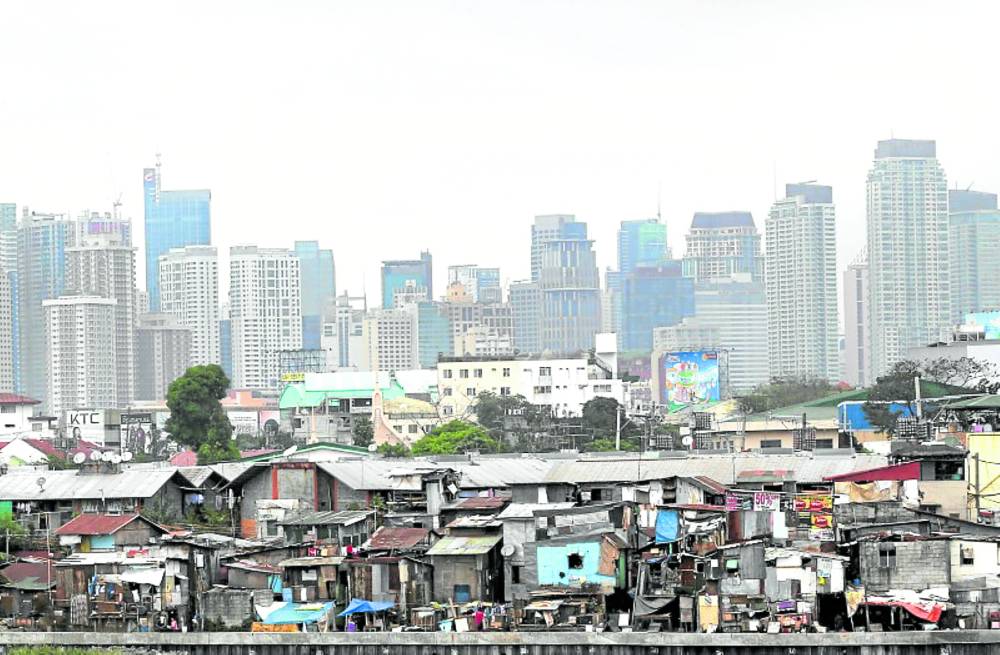
FILE PHOTO: The Philippine economy would have to grow by eight percent yearly until 2028 to bring down the country’s poverty rate to single digits., according to an expert. The Marcos administration aims to reduce the country’s poverty incidence between 8.8 and nine percent by 2028. INQUIRER/RAFFY LERMA
The Philippine economy would have to grow by eight percent yearly until 2028 to bring down the country’s poverty rate to single digits.
The Marcos administration aims to reduce the poverty incidence between 8.8 and nine percent by 2028.
“I am confident that this six to seven percent growth can be maintained over the next 4 to 5 years. Enough to bring us to a single-digit poverty incidence by 2028, we have to grow at least at 8 percent Gross Domestic Product (GDP)-wise,” Bernardo Villegas, Director for Research of the University of Asia and the Pacific (UA&P) Center for Research and Communication, said during the Economic Briefing for Diplomats.
In the second quarter, the country expanded by 6.3 percent buoyed by increased state spending and strong investments, marking the fastest expansion seen in four quarters.
READ: High jobless rate hints at quality of PH growth, says think tank
This brought average first-semester GDP growth to six percent, well within the government’s six- to seven-percent target for the year.
Meanwhile, the poverty rate declined to 15.5 percent in 2023 from 18.1 percent in 2021 as the average income of a Filipino increased.
For the Marcos administration to realize its goals, Villegas pinpointed three strategic areas crucial for economic expansion.
“The first and most important is to undo the wrong that we had for many years of neglecting rural and agricultural development,” Villegas said.
He added that agricultural productivity should grow by three to four percent every year.
READ: World Bank sees 6% GDP growth for PH
However, the country’s agricultural production, which contributes about a tenth to economic output, declined by 3.3 percent in the second quarter due to the drop in the value of crops and livestock production. This was also the biggest drop since the 3.4 percent contraction in the first quarter of 2021.
Villegas also emphasized the need for the government to increase the investment to GDP ratio.
“The usual investment to GDP ratio in East Asia is anywhere from 25 to 40 percent. Korea has 40 percent, China has 40 percent. Ours is in the low 20, 21 to 22 percent,” he said.
He expressed hopes that the country will get $15 billion to $20 billion worth of foreign direct investments (FDIs) by the end of Marcos administration.
“[The] increase of investment to at least $15 to $20 billion dollars will address investment in GDP ratio. If we do that, our investment in GDP ratio will be closer to 30 percent rather than 22 percent,” he added.
According to government data, FDI net inflows for the first seven months rose by 7.5 percent to $5.256 billion from $4.888 billion a year ago. With this, the central bank expects to record FDI net inflows of $10 billion by the end of the year.
Moreover, Villegas underscored that combating corruption in the Philippine government is vital for boosting economic development.
“Corruption leads to leakage of P800 billion a year. If we can reduce that, then that will add to the 8 percent growth,” he said.

